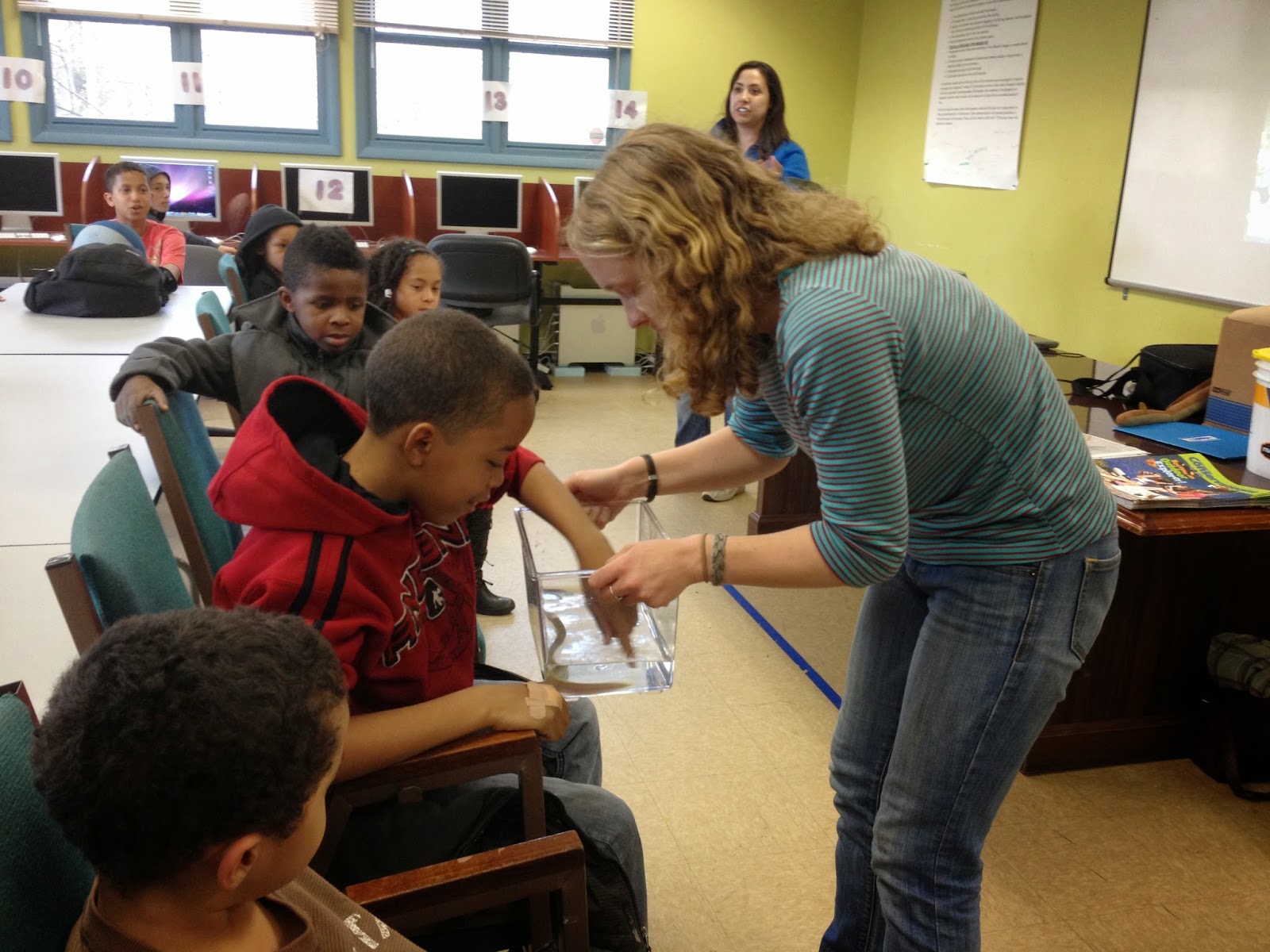
Planting
Everyone planted cantaloupe seeds. After some disappointing results from our last plantings, I'm hoping these are more successful!!
JUNE UPDATE: everyone's seedlings grew very well! (2 or 3 got some help from the garden fairy- luckily I was still germinating more seeds at home) As they grew more, the kids painted new pots, transferred the plants, and took them home.
Getting Up Close with Roots
I started germinating several cantaloupe seeds at home using moist paper towels and ziplock bags. I brought several in to show the kids what the plant initially looks like before sprouting above the soil. I put the germinated seeds under the children's microscope, which was a hit.
Veggie Talk
Our children's garden will primarily consist of edible plants so I spent some time talking about different vegetables and the parts of the plants we eat.
Leaves: Lettuce, kale
Stem: Celery
Fruit: Apple, orange, tomato, eggplant, peppers
Seeds: Corn, beans
Roots: Carrot
Flower: Broccoli,Cauliflower
Other: Potato (tuber), mushroom (fungi)
 For young kids, the fruit of a plant can be confusing to understand because most kids will want to associate fruit as in fruit vs. vegetable. However in some cases, we are eating the part of a vegetable plant that is called the fruit.
For young kids, the fruit of a plant can be confusing to understand because most kids will want to associate fruit as in fruit vs. vegetable. However in some cases, we are eating the part of a vegetable plant that is called the fruit.Types of Soil
We examined different types of soil by using our hands, magnifying glasses, and microscope. I had soil observation worksheets for the kids to draw and color what they found in their soil and questions about the importance of soil.We learned that certain soils are better suited for growing different plants. Different soils have different textures, colors, and particle size.
Soil Song (To the Tune of Mary Had a Little Lamb)
There are 5 types
of soil
Of soil
Of soil!
There are 5 types
of soil,
Can you name them
all?
Sand, silt, humus,
rocks and clay
Rocks and clay
Rocks and clay
Sand, silt, humus,
rocks and clay
Now we’ve learned
them all!
Soil is made from
weathering
Weathering,
Weathering!
Soil is made from
weathering
Rocks are breaking
down
Erosion washes
soil away,
Soil away,
Soil away
Erosion washes
soil away
Or blows it to the
wind!
 Horticulture Therapy Garden Field Trip
Horticulture Therapy Garden Field Trip
We also took a field trip this week to a beautiful Horticulture Therapy Garden.
We had a chance to tour the grounds... parts of site were still in the process of being completed and not all plantings were in, but so far it looks great.
The kids had an opportunity to plant seeds to bring home.


.jpg)



















.jpg)
.jpg)
.jpg)
.jpg)
.jpg)
.jpg)
.jpg)
.jpg)
.jpg)
.jpg)
.jpg)
.jpg)